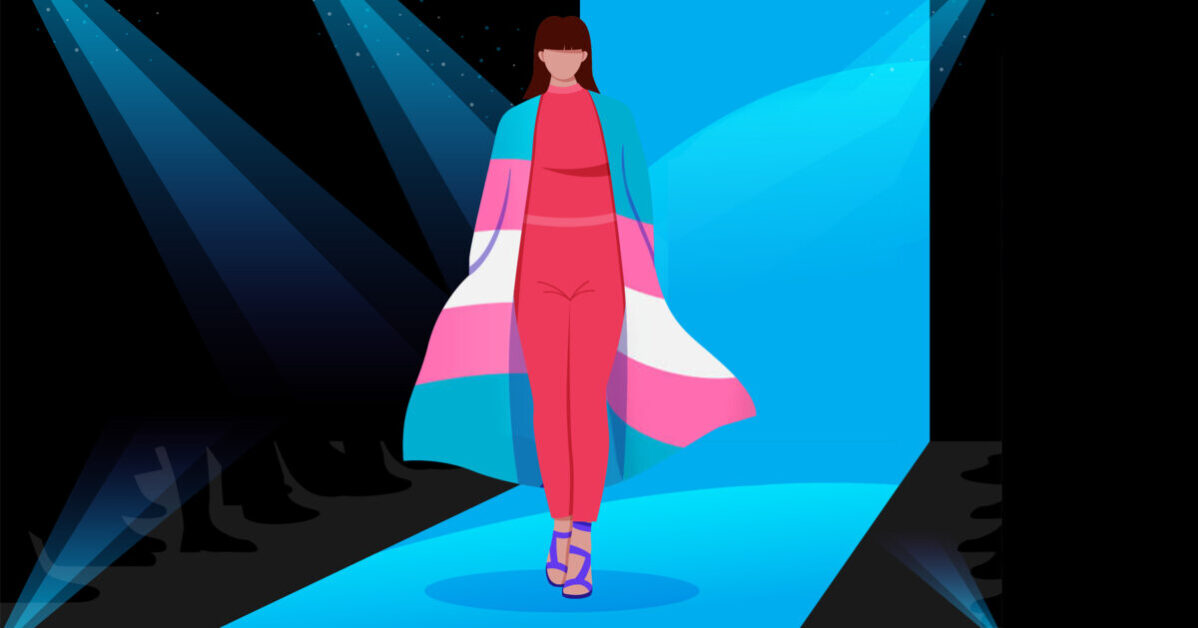Transgender Models
By Siobhan Donegan
Just as we can perceive that there is a revolution happening within the Beauty Industry, it would seem that the rainbow hued catwalk used to showcase a line of fashions by Louis Vuitton is indicative of Trans-inclusivity within the Modelling Industry. Thanks to there now being a better understanding of Transgenderism and the current collective ideology of ‘questioning’ the gender binary, it would seem that this has begun to change the Fashion Modelling Industry. However, although the catwalk, like the ‘Gender Revolution’ has begun to acknowledge a more diverse gender variant spectrum, previous transgender models made headlines for all the wrong reasons; initially of course because of being ‘outed’.
Before focusing in on some biographical illustrations of this point, I thought it would be best to briefly sketch the history of modelling itself. The concept or the ‘notion’ of Modelling started with Portrait painting. With the invention of Photography in the 1800’s the concept, its scope broadened. Marie Augustine Vernet, the wife of Charles Fredrick Worth, is credited with having been the first ever Fashion Model. It is in fact the Middle French word ‘Modelle’ from which the term ‘Modelling’ originates, but at first this term wasn’t used, as the first models were simply referred to as ‘live mannequins’, as their initial purpose was purely functional; as in the main mannequins were used to display fashionable clothes.
The ‘Modelling’ Industry blossomed by the mid 1900’s with the creation of one of the first ever Modelling Agencies in 1946. This was ‘Ford Models’ created by Eileen and Gerard Ford. After this, Modelling Agencies began to appear all over the World. By the 1960’s there was a cultural emphasis on youth and the Fashion Industry played a part in this with such iconic Models as Twiggy, Jean Shrimpton and Peggy Moffitt. With the 1970’s more diversity was introduced into the industry. Models also began to get better pay with Modelling becoming a full time career-even finding work for them in Europe and abroad. The 1990’s inaugurated the Era of the ‘Supermodel’-in which Models achieved true celebrity status-such as Naomi Campbell and Elle McPherson. However, in the 2000’s the Fashion Modelling Industry came under criticism due to eating disorders and drugs being issues within this world. But, Modelling Associations are now prioritising the wellbeing of Models. Modelling has now obviously become a Global phenomenon thanks to the internet, and Models such as Cara Delevingne can use multi-media platforms.
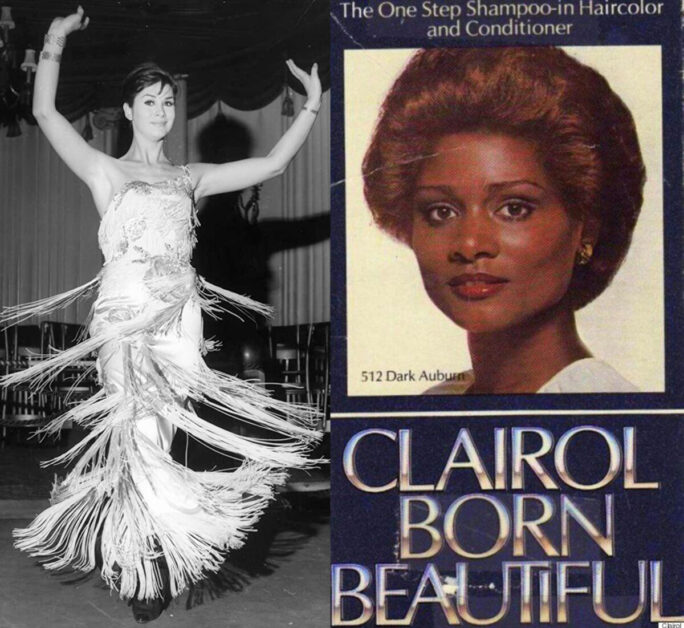 (Left: April Ashley. Right: Tracy ‘Africa’ Norman)
(Left: April Ashley. Right: Tracy ‘Africa’ Norman)
The history of Transgender Models within the Fashion Modelling industry is unfortunately more complicated. The beautiful and iconic April Ashley is not only one of the first Brits to have gender reassignment surgery but is also ‘credited’ as being the first successful Transgender Model. During the early stages of her career she did ‘runway and editorial work’-in high fashion magazines. However, unfortunately April was ‘outed’ by the tabloids, and her career was inevitably cut short.
As for ‘Mainstream’ Transgender Models, the first was apparently Tracy ‘Africa’ Norman who in 1971 was chosen by Irving Penn at a casting call for Italian Vogue. Despite the fact that Norman was eventually outed as Transgender and despite never being as successful as the first ever African American to appear on the front cover of Vogue; Beverly Johnson in 1974, her career had in fact been successful up to that point. She had been a runway House Model for Balenciaga in Paris and had contracts with Beauty brands Clairol and Avon. Tracy Norman had started out in the Drag Ball culture in New York mentoring up and coming young Drag Queens for the ‘House’ of Africa. Norman became the face of Clairol’s ‘Born Beautiful Hair Colour’-Dark Auburn in the mid 1970’s.
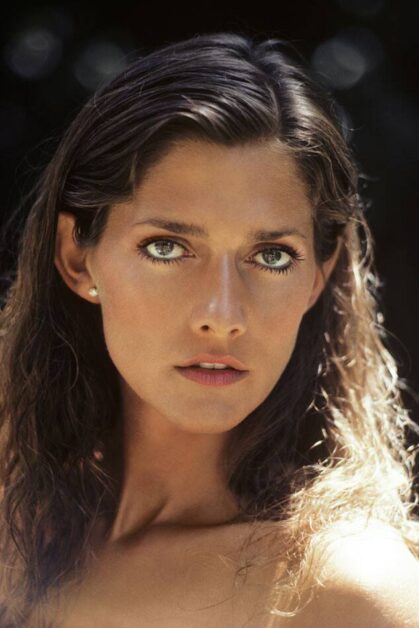 Another famous Transgender model is Caroline Cossey, also known in the Fashion Industry by her Modelling name Tula. She worked successfully from 1975 to 1981 as a Model and appeared in magazines such as Australian Vogue and Harper’s Bazaar, but was outed after appearing alongside other ‘Bond Girls’ in the 1981 James Bond film ‘For Your Eyes Only’-from the Roger Moore Bond era. After this her career as a model was on the rocks. However, Tula fought back by attempting to raise Trans-awareness by doing countless interviews and even wrote a book. Unfortunately, she ended up fleeing the limelight, apparently for the second time, as the only work that she was offered was based around her being Transgender which made her feel like a ‘Circus Act’. Famous Transgender Brazilian Model Roberta Close appeared for various Fashion Houses strutting up and down the catwalk, including Thierry Muggler, Guy Laroche and John Paul Gaultier. She was in fact voted ‘Most Beautiful Woman in Brazil’, and is currently acknowledged as having paved the way for the newly emerging Brazilian Trans Models.
Another famous Transgender model is Caroline Cossey, also known in the Fashion Industry by her Modelling name Tula. She worked successfully from 1975 to 1981 as a Model and appeared in magazines such as Australian Vogue and Harper’s Bazaar, but was outed after appearing alongside other ‘Bond Girls’ in the 1981 James Bond film ‘For Your Eyes Only’-from the Roger Moore Bond era. After this her career as a model was on the rocks. However, Tula fought back by attempting to raise Trans-awareness by doing countless interviews and even wrote a book. Unfortunately, she ended up fleeing the limelight, apparently for the second time, as the only work that she was offered was based around her being Transgender which made her feel like a ‘Circus Act’. Famous Transgender Brazilian Model Roberta Close appeared for various Fashion Houses strutting up and down the catwalk, including Thierry Muggler, Guy Laroche and John Paul Gaultier. She was in fact voted ‘Most Beautiful Woman in Brazil’, and is currently acknowledged as having paved the way for the newly emerging Brazilian Trans Models.
(Photo: Caroline Cossey aka Tula)
As can be seen from these brief biographical sketches early Transgender Models lived in the constant fear of being outed. However, despite the heteronormative transphobia within the Fashion Modelling Industry, this world has ironically ‘maintained close ties’ with the LGBT Community; for example, Stephen Sprous worked with Teri Toye in the 1980’s, in the 1990’s Thierry Muggler worked with Connie Fleming and John Paul Gaultier with Roberta Close, mentioned above, again in the 90’s. Thus proving that some of the Fashion Industry leaders were influenced by and worked with ‘Transgender Muses’.
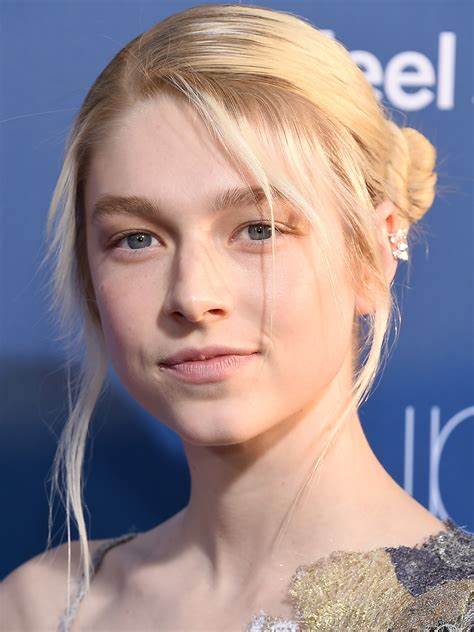 As I previously stated in my article on the Beauty Industry and the Trans/LGBT Community, beauty and femininity used to be the exclusive reserve of the heteronormative collective culture, and that of course being Cisgender Women. However, the Beauty Industry and the Modelling Industry are being transformed as they are beginning to embrace diversity including Trans-inclusivity and thus Trans-visibility. As such I think that as we hopefully see more Trans-female Models (there are also Trans-male models appearing on the scene) the heteronormative culture may begin to realise that beauty has no gender. A good example of changing attitudes is the fact that Trans rights campaigner and writer Paris Lees was announced as the Brand Ambassador for Beauty Hair Brand Pantene at ‘Fortunes Most Powerful Women Conference’; Lees was the first Transgender woman to be appointed by Pantene.
As I previously stated in my article on the Beauty Industry and the Trans/LGBT Community, beauty and femininity used to be the exclusive reserve of the heteronormative collective culture, and that of course being Cisgender Women. However, the Beauty Industry and the Modelling Industry are being transformed as they are beginning to embrace diversity including Trans-inclusivity and thus Trans-visibility. As such I think that as we hopefully see more Trans-female Models (there are also Trans-male models appearing on the scene) the heteronormative culture may begin to realise that beauty has no gender. A good example of changing attitudes is the fact that Trans rights campaigner and writer Paris Lees was announced as the Brand Ambassador for Beauty Hair Brand Pantene at ‘Fortunes Most Powerful Women Conference’; Lees was the first Transgender woman to be appointed by Pantene.
(Photo: Hunter Schafer)
Being Transgender in some circles is no longer being seen as a hindrance and is in fact seen as aspirational. According to Hunter Schafer, who is just one example of the new young crop of Transgender models:
“It’s really wild to be at this level of visibility.”
Schafer was only 18 when she was signed to Elite Model Management and her career success includes walking down the catwalk for Dior, Helmut Lang, Miu Miu.
Valentina Sampaio made history as the first ever openly Transgender Model to appear on the front cover of Vogue Paris. She has also appeared on the covers of Brazilian Vogue and German Vogue.
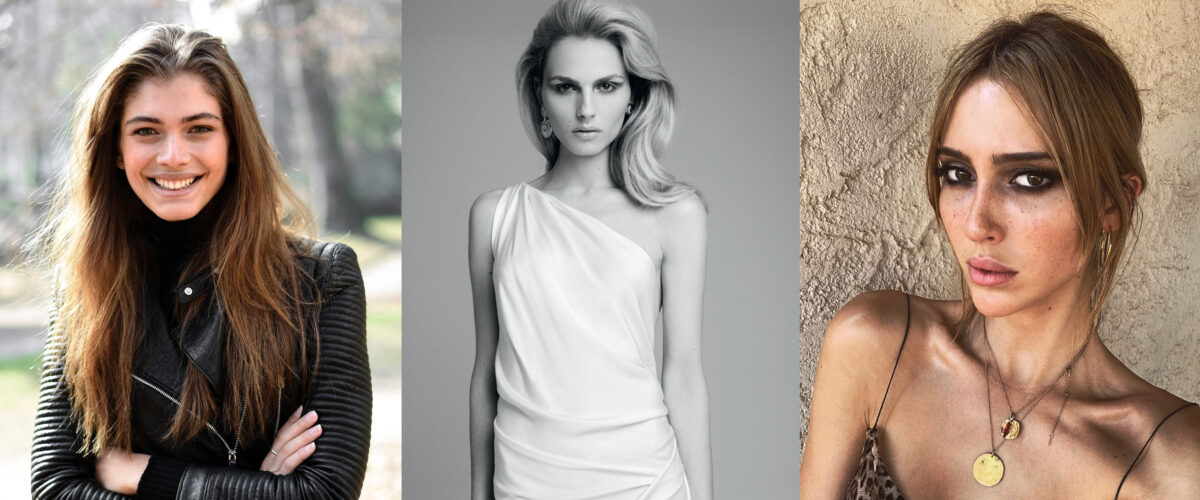 (Left: Valentina Sampaio. Middle: Andreja Pejic. Right: Teddy Quinlivan)
(Left: Valentina Sampaio. Middle: Andreja Pejic. Right: Teddy Quinlivan)
I would like to mention two more examples of Trans-female models to end on a positive note. The first is the famous Bosnian Australian Trans-Model Andreja Pejic, who had previously been famous for her androgynous look, but who eventually announced that she identified as a woman, stating, ‘differences should not equal divisions.’ Another stunning Transgender Model is Teddy Quinlivan, who was discovered by Nicolas Ghesquiere, Creative Director of Louis Vuitton. Quinlivan’s career has ‘boomed’.
